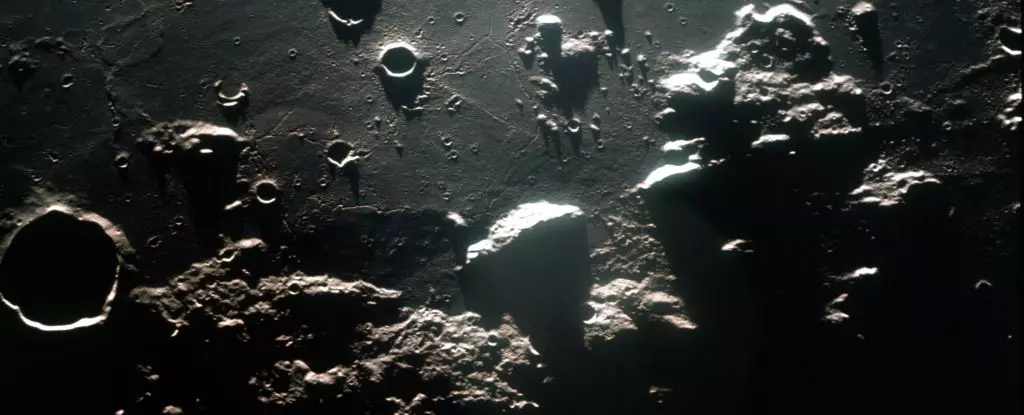Recent research analyzing lunar craters suggests that the long-term retention of ancient reservoirs of water ice on the Moon may not be feasible. Physicist Norbert Schörghofer of the Planetary Science Institute and astrophysicist Raluca Rufu of the Southwest Research Institute have concluded that most of the craters containing permanent pockets of shadow, which have been a target for future Moon exploration, are younger than 2.2 billion years. This finding challenges previous predictions about the presence and quantity of water ice on the Moon.
While the existence of water on the Moon is already established, the amount and location of this valuable resource remains a topic of interest. Scientists have turned their attention to permanently shadowed regions (PSRs), particularly deep craters, as potential sites with accumulations of water ice. These regions have low temperatures, as sunlight is unable to reach them, making them favorable for ice preservation. Previous estimates suggested that these craters could contain ice patches several meters thick, accumulated over billions of years. However, the analysis suggests that the PSRs have not been shielded from the Sun for a sufficient duration to accumulate such quantities of ice.
Resolving Discrepancies and Implications
The recent discovery builds on a previously published paper that aimed to reconcile the rate at which the Moon is moving away from Earth and its age. This study suggested that resonance between the Earth and Moon caused fluctuations in the lunar recession rate, and the analysis of PSRs aligns with this finding. Early in the history of the Solar System, the Moon, along with other inner planets, experienced a period known as the Late Heavy Bombardment, characterized by intense comet and asteroid impacts. The Moon’s hot and molten state at the time, combined with volcanic activity, likely released water from its interior. However, the PSRs, where the water would have accumulated, are much younger than previously thought. As a result, ancient reservoirs of water ice are unlikely to be present on the Moon.
This new analysis has significant implications for future lunar missions, particularly NASA’s Artemis III mission, which involves crewed landings on the Moon. The selection of landing sites for this mission is being influenced by the proximity of PSRs. However, the research suggests that older PSRs could potentially have higher concentrations of water ice than younger ones. Therefore, determining the age of craters will be essential in identifying suitable landing sites for both crewed and uncrewed missions.
The latest analysis challenges previous assumptions about the presence and abundance of water ice on the Moon. While the Moon undoubtedly contains water, the lack of ancient water ice reservoirs has implications for long-term lunar exploration and resource utilization. The identification of suitable landing sites based on age estimates of craters will play a crucial role in accessing and utilizing lunar water resources. As scientists continue to refine their understanding of the Moon’s geological history, further insights into the distribution and availability of water on the Moon will unfold.


Leave a Reply